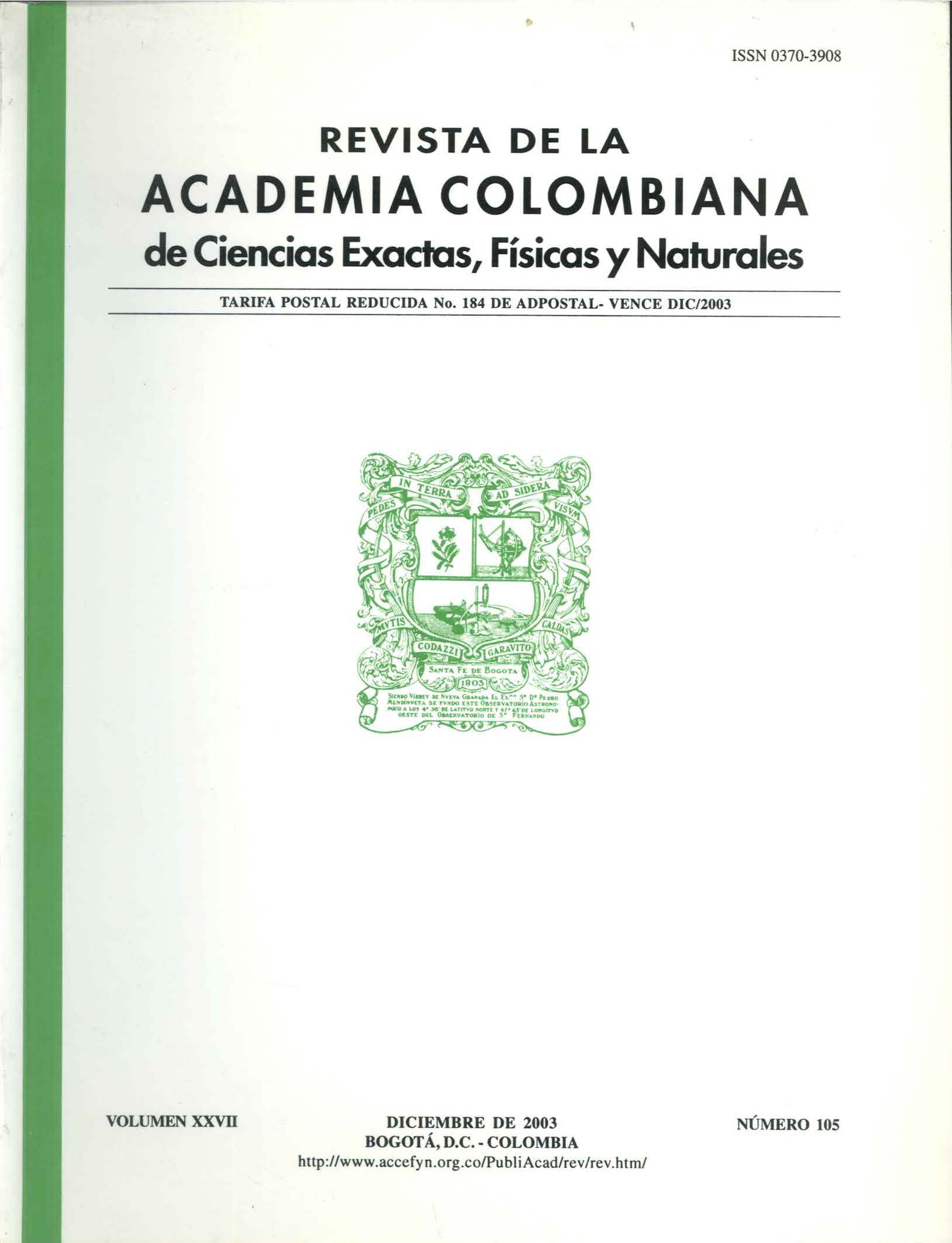Resumen
Se presenta un modelo básico de entrada de asteroides en una atmósfera planetaria, basado principalmente en el trabajo desarrollado por Chyba et al. (1993). Las ecuaciones del modelo se solucionan mediante integración numérica y se usa como caso de prueba el evento Tunguska de 1908. El modelo planteado se usa para estudiar la entrada de asteroides y cometas en las atmósferas de los planetas Marte y Venus, y los resultados obtenidos son comparados con la evidencia experimental proveniente de la exploración de estos planetas con sondas espaciales.
Referencias
Anderson, J. 2000. lntroduction to Flight. Aerospace Science/Technology series. Ed. McGraw Hill.
Celnikier, L .. 1995. Understanding the Physics of Meteoritic Descent. Am. J. Phys., 63: 524-535.
Chyba, C.. 1993. Explosions of Small Spacewatch Objects in the Earth's Atmosphere. Nature, 363: 701-703.
Chyba, C., Thomas, P. & Zanhle, K. 1993. The 1908 Tunguska Explosion: Atmospheric Disruption of a Stony Asteroid. Nature, 361: 40-44.
Crawford, D. 1996. An Analytical Model of Meteoroid Entry into Planetary Atmospheres. Lunar and Planetary lnstitute.
Everhart, E .. 1985. An Efficient lntegrator That Uses Gauss-Radau Spacings. En: Dynamics of Comets: Their Origin and Evolution, 185-202. Reidel Publishing Company.
Hills, J. & Goda, P. 1993. The Fragmentation of Small Asteroids in the Atmosphere. Astron. J., 105: 1114-1144.
Keating, G., Nicholson, J. y Lake, L. 1980. Venus Upper Atmosphere Structure. J. Geophys. Res., 85: 7941-7956.
Mclnnes, C. 1995. Trans-Atmospheric Dynamics of an Ablating Hypervelocity Body. Mon. Not. R. Astron. Soc., 274: 110-114.
Neukum G. e Ivanov B. 1994. Crater Size Distributions and lmpact Probabilities on Earth from Lunar, Terrestrial-planet, and Asteroid Cratering Data. En: Hazards due to comets & asteroids. The University of Arizona Press, 359-416.
Opik, E. 1958. Physics of Meteor Flight in the Atmosphere, lnterscience Publishers lnc., New York.
Passey, Q. & Melosh, H. 1980. Effects of Atmospheric Breakup on Center Field Formation, lcarus, 42: 211-233.
Portilla, G. 1996. El problema de los dos cuerpos y el problema del satélite artificial en ecuaciones diferenciales de primer orden. Rev. Acad. Colomb. Cien., 20: 25-32.
Rabinowitz, D. et al.. 1994. The Population of Earth-crossing Asteroids. En: Hazards due to comets & asteroids. The University of Arizona Press, 285-312.
Sehnal, L.. 1990. Analytical Models of Mars' Atmosphere Density. Bull. Czech. Acad. Sci., 41: 115-117.
Seiff, A. et al. 1980. Measurements of Thermal Structure and Thermal Contrasts in the Atmosphere of Venus and Related Dynamical Observations: Results From the Four Pioneer Venus Probes. J. Geophys. Res., 8ó: 7903-7933.
Sekanina, Z .. 1983. The Tunguska Event: No Cometary Signature in Evidence. Astron. J., 88: 1382-1414.
Sekanina, Z. 1993. Disintegration Phenomena Expected During Collision of Comet Shoemaker-Levy 9 with Jupiter. Science, 262: 382-387.
Zanhle, K. 1992. Airburst Origin of Dark Shadows on Venus. J. Geophys. Res., 97: 10243-10255.

Esta obra está bajo una licencia internacional Creative Commons Atribución-NoComercial-SinDerivadas 4.0.
Derechos de autor 2023 https://creativecommons.org/licenses/by-nc-nd/4.0

